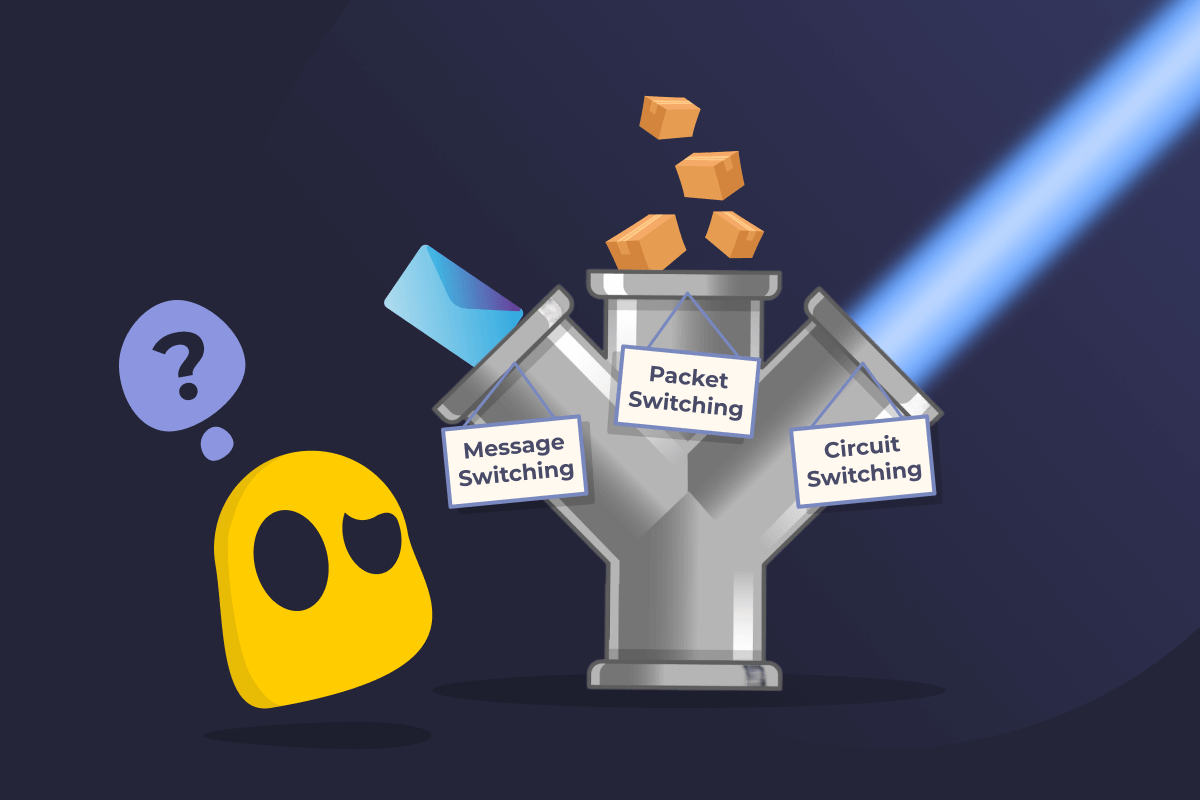Message Switching

Message Switching Definition
Message switching is a data transmission method where an entire message is sent across a network using a series of nodes. Each node temporarily stores the data and forwards it when a path becomes available. This process can optimize network performance because it allows communication between devices that aren’t online at the same time and doesn’t need a dedicated path. However, it can introduce high latency, making it unsuitable for real-time communication. Because of this, it’s mostly used in older systems, like telegraph networks.
How Message Switching Works
Message switching uses a store-and-forward process. Each message contains its destination address, which tells the nodes it travels through where it needs to go. It is then sent from one node to another without being broken down into smaller data packets. Every node briefly stores the message in its memory before forwarding it to the next stop. If the next node is busy, the message waits until the path clears.
Since the sender and receiver don’t have to be online at the same time, message switching allows asynchronous transmission that helps prevent data loss but can cause delays.
Message Switching vs Packet and Circuit Switching
Message switching differs from packet switching and circuit switching in how it handles data flow, connection setup, and delay.
| Feature | Message Switching | Packet Switching | Circuit Switching |
| Path type | No dedicated path | No dedicated path | Dedicated path |
| Speed/delay | High delay | Medium delay | Low delay |
| Real-time support | Poor | Good | Excellent |
| Common example | Telegraph networks | Web browsing, messaging | Phone calls |
Read More
FAQ
Yes, message switching is considered reliable because its store-and-forward design keeps a complete copy of the message at every transfer point. If a connection fails, delivery can resume from the last location without starting over.
While rare in modern networking, message switching still appears in certain specialized systems. It’s typically used when immediate delivery isn’t critical, such as in some email infrastructures or job-queue frameworks that can tolerate delays.
Switching in networking generally falls into three categories: message switching, packet switching, and circuit switching. Each uses a different method for moving data and varies in speed, connection setup, and suitability for real-time applications.
Store-and-forward is a networking process where a complete message is held at an intermediate point before being sent on to the next destination. This approach ensures data isn't lost if a route is unavailable, though it can slow overall delivery.

 45-Day Money-Back Guarantee
45-Day Money-Back Guarantee